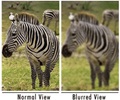The popular antidepressant drug, Prozac, might soon have an unexpected new medical use - as a treatment for lazy eye syndrome, according to a new study in rats with impaired vision.
London, Apr 19 (ANI): The popular antidepressant drug, Prozac, might soon have an unexpected new medical use - as a treatment for lazy eye syndrome, according to a new study in rats with impaired vision.
The study shows that daily doses of drug fluoxetine (Prozac) help rats' brains' visual centres to rewire themselves and correct the defect.If the drug has a similar effect in humans, it could potentially help the roughly 1-5 percent of people thought to have amblyopia, or 'lazy eye'.
It is believed that fluoxetine and other selective serotonin re-uptake inhibitors (SSRIs) relieve depression by boosting the amount of the mood-related messenger molecule serotonin that is circulating among the brain's cells, reports Nature.
But the new research, led by José Fernando Maya Vetencourt of the Scuola Normale Superiore in Pisa, Italy, suggests that it can have other effects too.
The research team tested the theory that SSRIs increase the plasticity of the brain's nerve cells - their capacity to make and break connections with each another. It is this feature that underlies the mental wiring of processes such as accurate vision.
According to Ben Webb, a visual neuroscientist at the University of Nottingham, UK, the main cause of amblyopia is thought to be the problems with brain wiring.
Advertisement
It is treatable if caught early, Webb says, "ideally as early as you can test a child - say, 18 months".
Advertisement
The fluoxetine given to the rats in the study seems to have encouraged the visual cortex to return to a juvenile state, allowing the brains to make these corrections even in adulthood.
Some neuroscientists had suspected that fluoxetine might increase brain plasticity because some users show enhanced neuron development in certain brain areas.
Maya Vetencourt and his colleagues tested the idea on rats that had had one eye sewn shut during their early life. They then swapped the animals' eyes, and gave some of the rats a daily dose of fluoxetine for four weeks.
The adult animals' vision recovered fully, says Maya Vetencourt.
The rats not only showed full activity in their visual neurons, they also behaved as if they were fully-sighted.
The study is published in Science 1. (ANI)
Source-ANI
SRM/M










